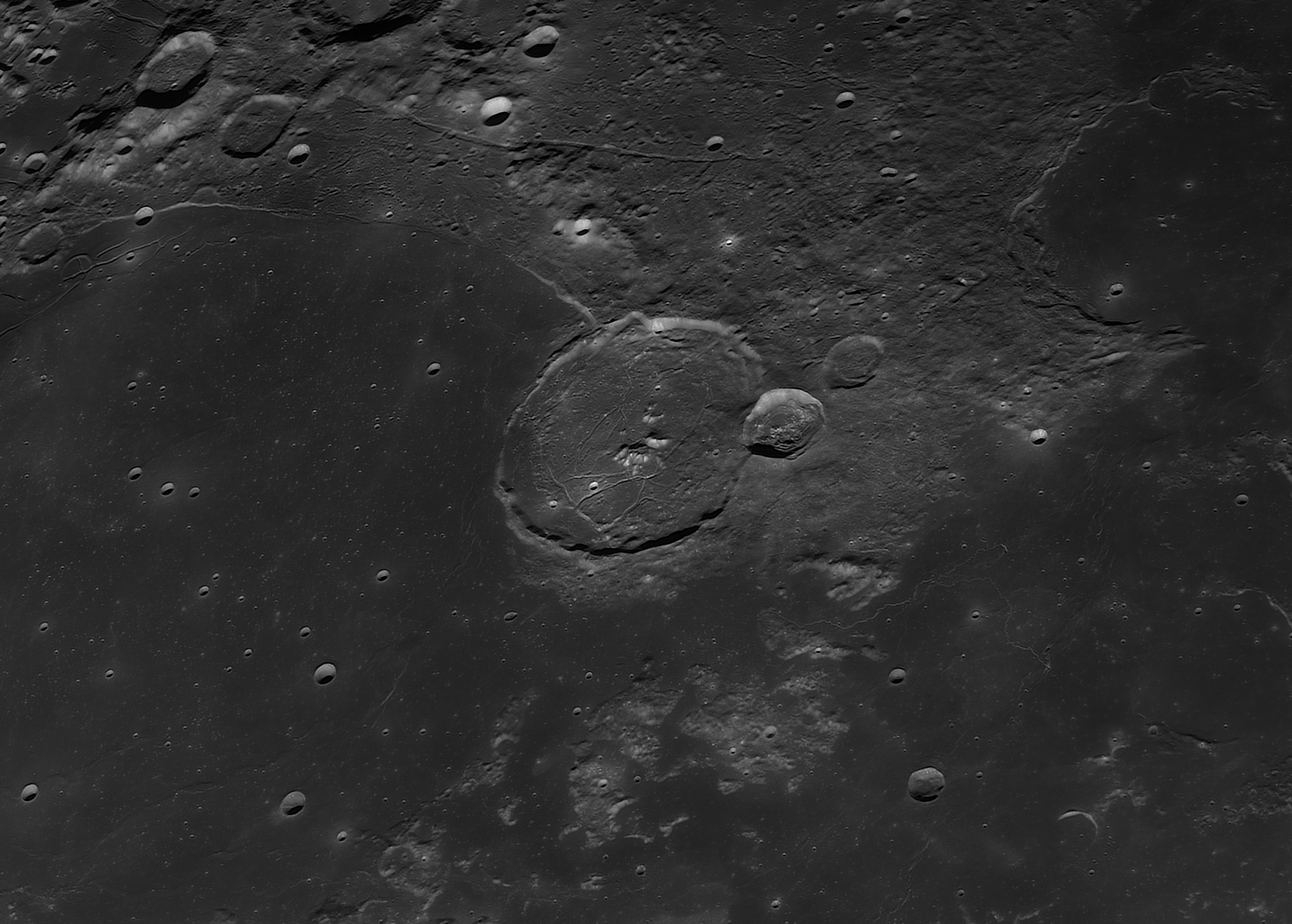Some lunar images with a C14 see link below
Under a favorable moon libration.
The most striking crater on the western moon edge is Aristarchus.
Aristarchus is very clear and has a cascading crater edge. Next to Aristarchus is the crater Herodotus. Between the two craters the Vallis Schröteri is a large shivering system that is quite prominently visible. Around to see many lava channels that are partially visible and partly under the moon crust. Under Aristarchus you can still see a big rill Rupes Toscanelli. On the right of Aristarchus you see a large mountain chain of Montes Argicola. It is striking that this whole area resembles a square island surrounded by lava seas. Further below Aristarchus see a ghost crater Prinz with some small craters.
Top left you can see rima Galilaei with Marius hills.
Image: Crater Aristarchus
This observation shows you in the middle crater Reiner (30km), which lies in the western hemisphere (around 55 degrees). Just above you can see a group of moon swirls Reiner Gamma (64km long). Curls of light moon material that can be easily observed at almost full moon.
It was a mystery to many how they arose until researcher Sonia Tikoo (in 2018) had a possible explanation for these separate curls.
Image: Reiner Gamma
They discovered that it might have to do with lava tubes (long, narrow structures formed by flowing lava during volcanic eruptions) or with lava dikes (vertical slabs of magma that were raised and solidified from the depth). But this led to another question: how can these lava tubes or lava dikes be so strongly magnetic? The answer lies in the distant past of the moon at the time of the old volcanic eruptions that took place some 3 billion years ago. Experiments have shown that many moonstones become magnetic when heated to more than 600 degrees Celsius in an oxygen-free environment. This is because some minerals are broken down at high temperatures and release metal iron. If there is a strong magnetic field nearby, the newly formed iron will be pulled in the direction of that field. An earlier study showed that the old magnetic field of the moon lasted 1 billion to 2.5 billion years longer than previously thought. And it could well be that this went together with the creation of the lava tubes or lava dikes. The high iron content of this would have become strongly magnetic when cooled down. "No one had seen this explanation coming," says Tikoo. "This was the last piece in the puzzle so we now understand how the magnetism underlies the curls." (source scientias.nl)
Image: Crater Gassendi
A beautiful area with diversity of details.
Image: Moon North part mosaic
If it is now the terminator or the polar regions of the moon, it remains fascinating.
18/19-1-2019
Telescope C14, red filter, camera Basler Ace 1920
Enschede Netherlands


